1 Overview of Human Resource Management 2

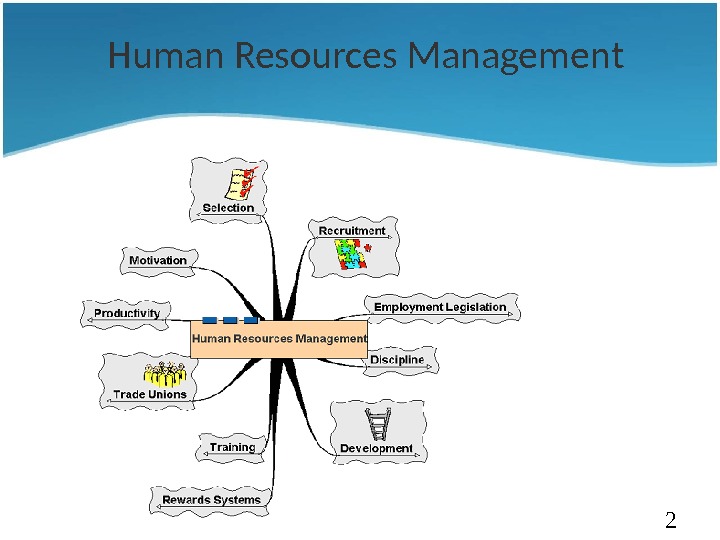
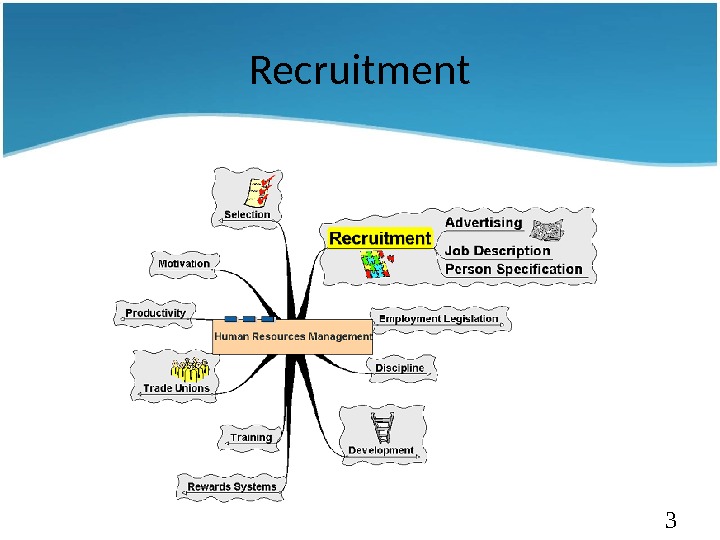

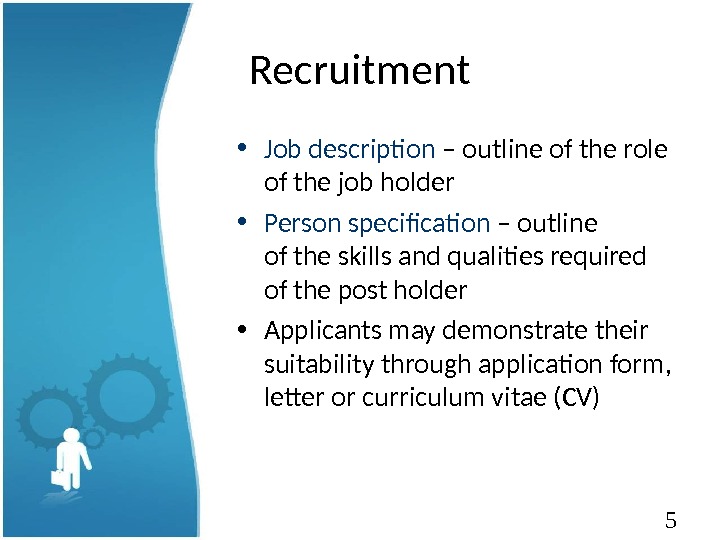

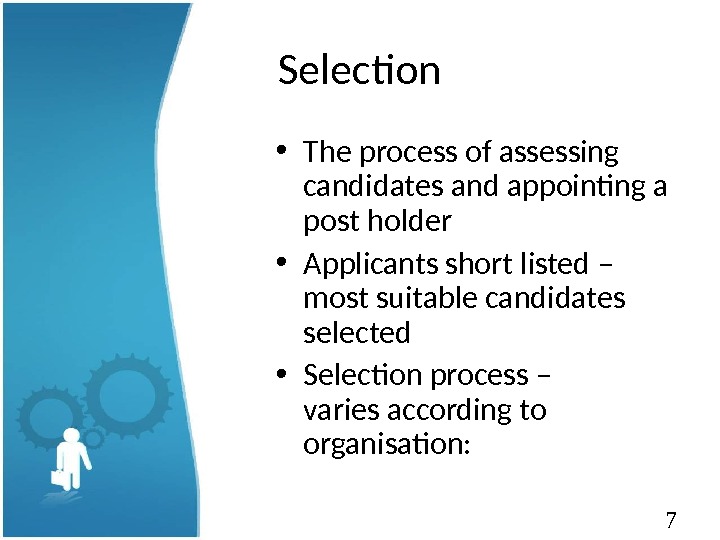
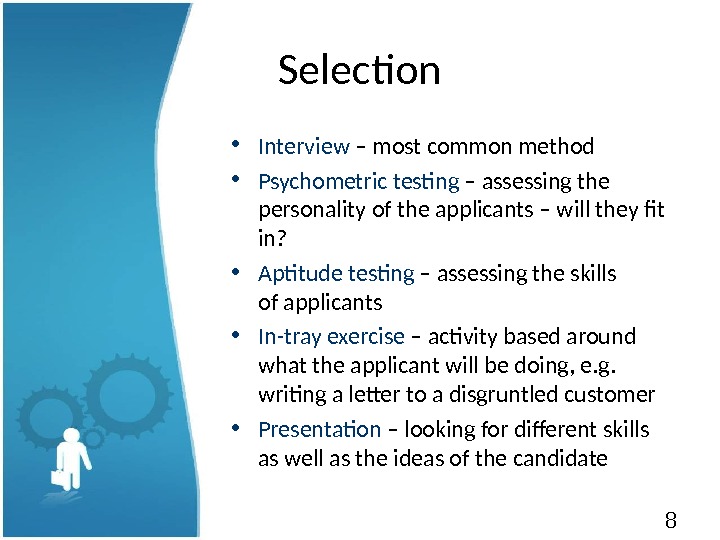
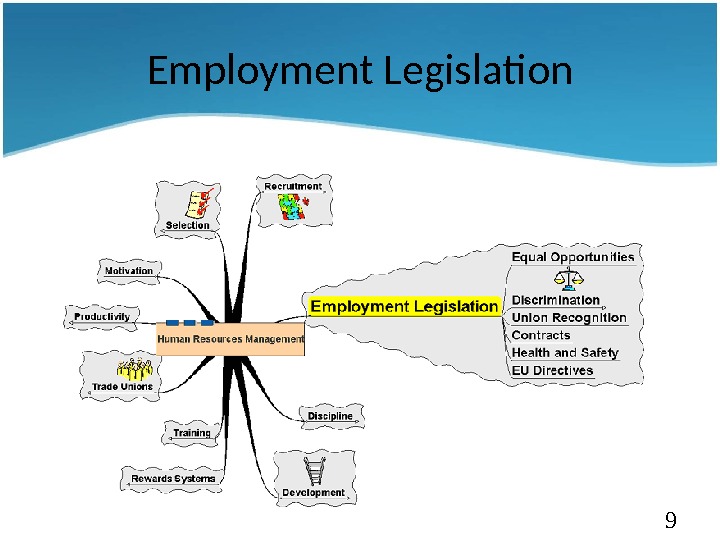

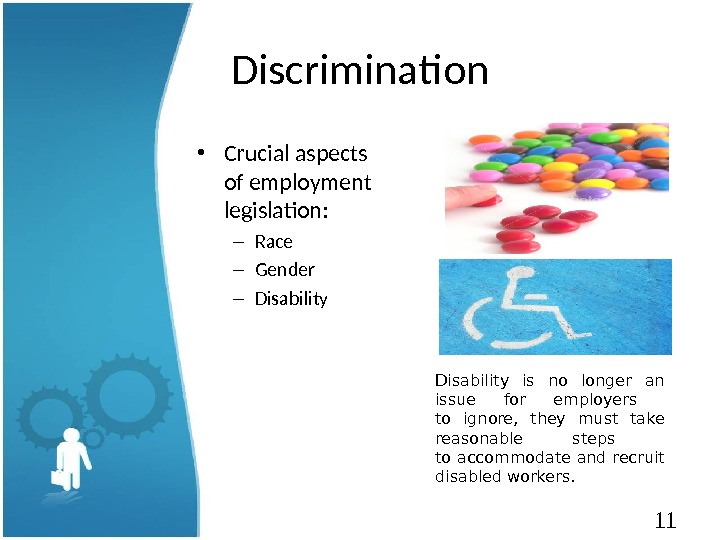

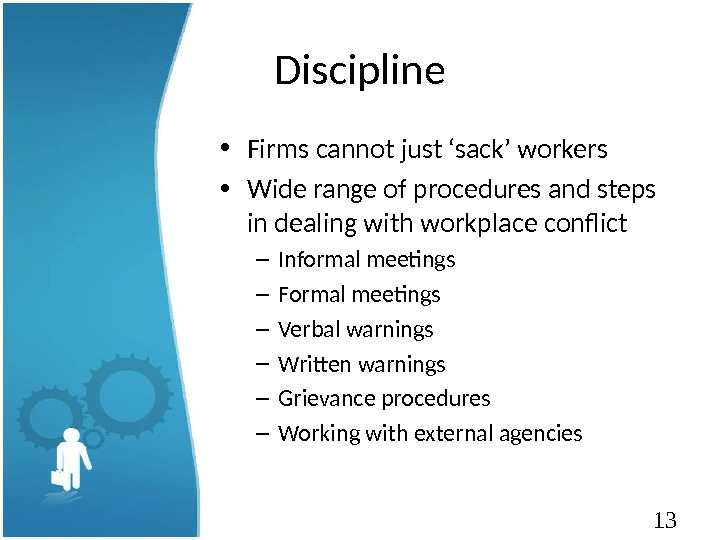

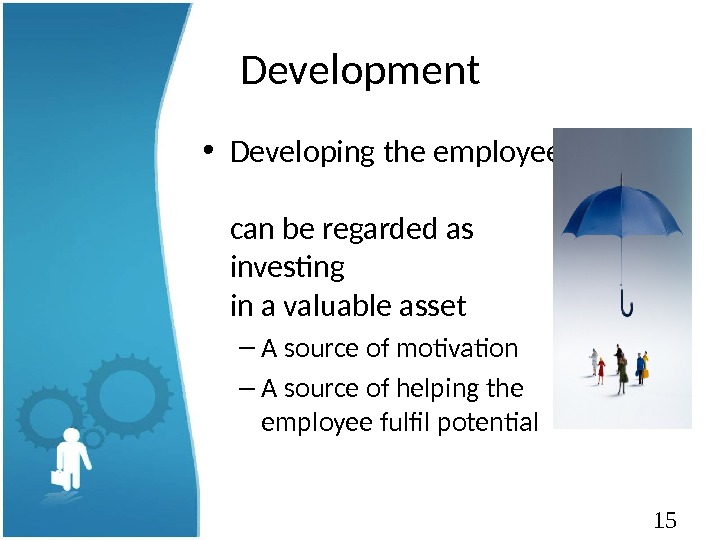

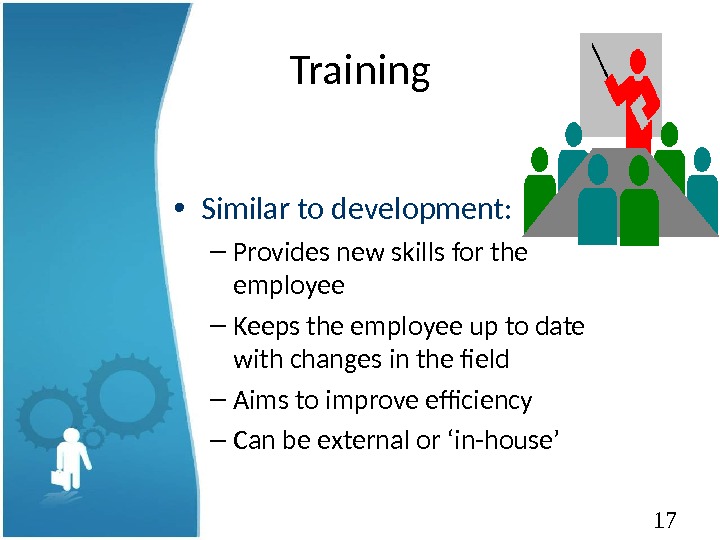




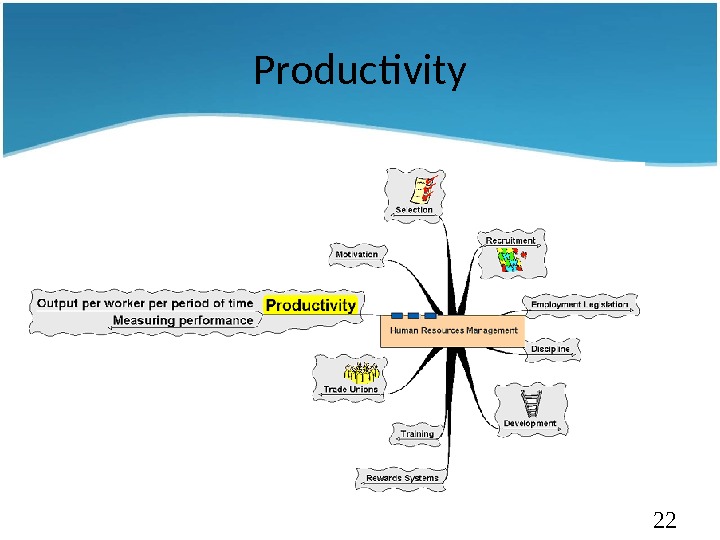


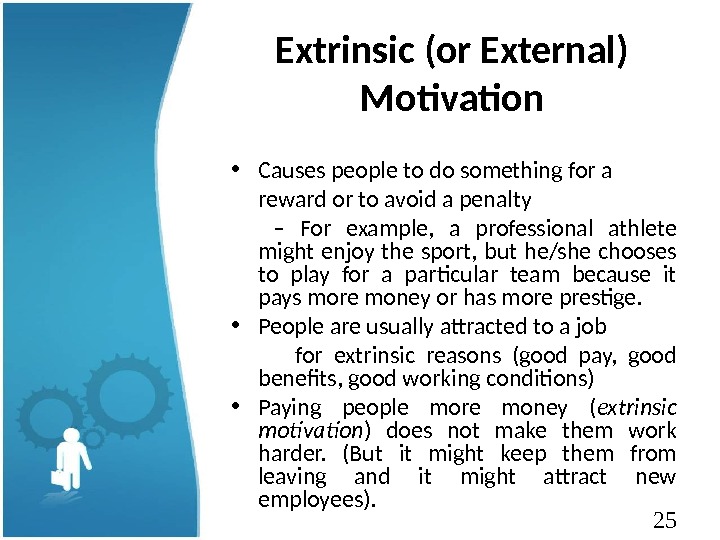
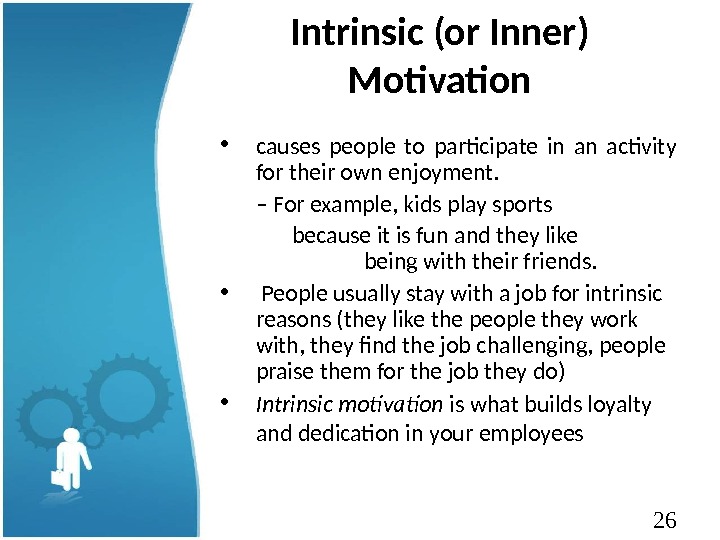
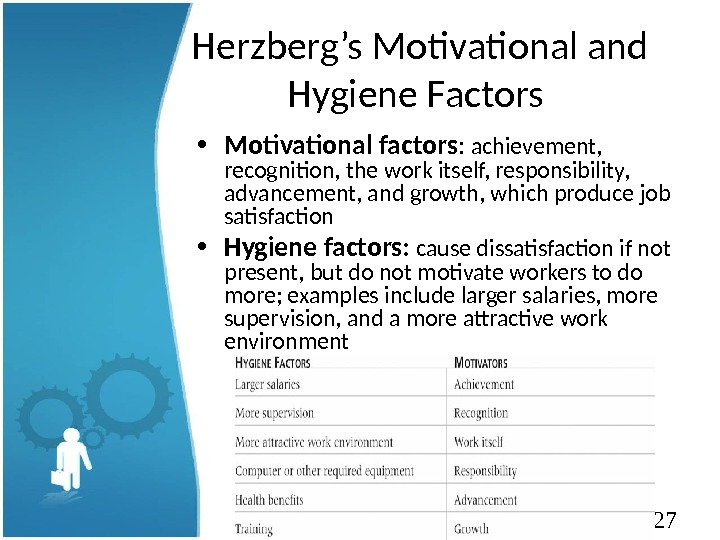


00_overview_of_human_resource_management.ppt
- Размер: 764 Кб
- Количество слайдов: 29
Описание презентации 1 Overview of Human Resource Management 2 по слайдам
 1 Overview of Human Resource Management
1 Overview of Human Resource Management
 2 Human Resources Management
2 Human Resources Management
 3 Recruitment
3 Recruitment
 4 Recruitment • The process by which a job vacancy is identified and potential employees are notified. • The nature of the recruitment process is regulated and subject to employment law. • Main forms of recruitment through advertising in newspapers, magazines, trade papers and internal vacancy lists.
4 Recruitment • The process by which a job vacancy is identified and potential employees are notified. • The nature of the recruitment process is regulated and subject to employment law. • Main forms of recruitment through advertising in newspapers, magazines, trade papers and internal vacancy lists.
 5 Recruitment • Job description – outline of the role of the job holder • Person specification – outline of the skills and qualities required of the post holder • Applicants may demonstrate their suitability through application form, letter or curriculum vitae (CV)
5 Recruitment • Job description – outline of the role of the job holder • Person specification – outline of the skills and qualities required of the post holder • Applicants may demonstrate their suitability through application form, letter or curriculum vitae (CV)
 6 Selection
6 Selection
 7 Selection • The process of assessing candidates and appointing a post holder • Applicants short listed – most suitable candidates selected • Selection process – varies according to organisation:
7 Selection • The process of assessing candidates and appointing a post holder • Applicants short listed – most suitable candidates selected • Selection process – varies according to organisation:
 8 Selection • Interview – most common method • Psychometric testing – assessing the personality of the applicants – will they fit in? • Aptitude testing – assessing the skills of applicants • In-tray exercise – activity based around what the applicant will be doing, e. g. writing a letter to a disgruntled customer • Presentation – looking for different skills as well as the ideas of the candidate
8 Selection • Interview – most common method • Psychometric testing – assessing the personality of the applicants – will they fit in? • Aptitude testing – assessing the skills of applicants • In-tray exercise – activity based around what the applicant will be doing, e. g. writing a letter to a disgruntled customer • Presentation – looking for different skills as well as the ideas of the candidate
 9 Employment Legislation
9 Employment Legislation
 10 Employment Legislation • Increasingly important aspect of the HRM role • Wide range of areas for attention Even in a small business, the legislation relating to employees is important – chemicals used in a hairdressing salon for example have to be carefully stored and handled to protect employees.
10 Employment Legislation • Increasingly important aspect of the HRM role • Wide range of areas for attention Even in a small business, the legislation relating to employees is important – chemicals used in a hairdressing salon for example have to be carefully stored and handled to protect employees.
 11 Discrimination • Crucial aspects of employment legislation: – Race – Gender – Disability is no longer an issue for employers to ignore, they must take reasonable steps to accommodate and recruit disabled workers.
11 Discrimination • Crucial aspects of employment legislation: – Race – Gender – Disability is no longer an issue for employers to ignore, they must take reasonable steps to accommodate and recruit disabled workers.
 12 Discipline
12 Discipline
 13 Discipline • Firms cannot just ‘sack’ workers • Wide range of procedures and steps in dealing with workplace conflict – Informal meetings – Formal meetings – Verbal warnings – Written warnings – Grievance procedures – Working with external agencies
13 Discipline • Firms cannot just ‘sack’ workers • Wide range of procedures and steps in dealing with workplace conflict – Informal meetings – Formal meetings – Verbal warnings – Written warnings – Grievance procedures – Working with external agencies
 14 Development
14 Development
 15 Development • Developing the employee can be regarded as investing in a valuable asset – A source of motivation – A source of helping the employee fulfil potential
15 Development • Developing the employee can be regarded as investing in a valuable asset – A source of motivation – A source of helping the employee fulfil potential
 16 Training
16 Training
 17 Training • Similar to development: – Provides new skills for the employee – Keeps the employee up to date with changes in the field – Aims to improve efficiency – Can be external or ‘in-house’
17 Training • Similar to development: – Provides new skills for the employee – Keeps the employee up to date with changes in the field – Aims to improve efficiency – Can be external or ‘in-house’
 18 Rewards Systems
18 Rewards Systems
 19 Rewards Systems • The system of pay and benefits used by the firm to reward workers • Money not the only method • Fringe benefits • Flexibility at work • Holidays, etc.
19 Rewards Systems • The system of pay and benefits used by the firm to reward workers • Money not the only method • Fringe benefits • Flexibility at work • Holidays, etc.
 20 Trade Unions
20 Trade Unions
 21 Trade Unions • Importance of building relationships with employee representatives • Role of Trade Unions has changed • Importance of consultation and negotiation and working with trade unions • Contributes to smooth change management and leadership
21 Trade Unions • Importance of building relationships with employee representatives • Role of Trade Unions has changed • Importance of consultation and negotiation and working with trade unions • Contributes to smooth change management and leadership
 22 Productivity
22 Productivity
 23 Productivity • Measuring performance : • How to value the workers contribution • Difficulty in measuring some types of output – especially in the service industry • Appraisal – Meant to be non-judgmental – Involves the worker and a nominated appraiser – Agreeing strengths, weaknesses and ways forward to help both employee and organisation
23 Productivity • Measuring performance : • How to value the workers contribution • Difficulty in measuring some types of output – especially in the service industry • Appraisal – Meant to be non-judgmental – Involves the worker and a nominated appraiser – Agreeing strengths, weaknesses and ways forward to help both employee and organisation
 24 Motivation
24 Motivation
 25 Extrinsic (or External) Motivation • Causes people to do something for a reward or to avoid a penalty – For example, a professional athlete might enjoy the sport, but he/she chooses to play for a particular team because it pays more money or has more prestige. • People are usually attracted to a job for extrinsic reasons (good pay, good benefits, good working conditions) • Paying people more money ( extrinsic motivation ) does not make them work harder. (But it might keep them from leaving and it might attract new employees).
25 Extrinsic (or External) Motivation • Causes people to do something for a reward or to avoid a penalty – For example, a professional athlete might enjoy the sport, but he/she chooses to play for a particular team because it pays more money or has more prestige. • People are usually attracted to a job for extrinsic reasons (good pay, good benefits, good working conditions) • Paying people more money ( extrinsic motivation ) does not make them work harder. (But it might keep them from leaving and it might attract new employees).
 26 Intrinsic (or Inner) Motivation • causes people to participate in an activity for their own enjoyment. – For example, kids play sports because it is fun and they like being with their friends. • People usually stay with a job for intrinsic reasons (they like the people they work with, they find the job challenging, people praise them for the job they do) • Intrinsic motivation is what builds loyalty and dedication in your employees
26 Intrinsic (or Inner) Motivation • causes people to participate in an activity for their own enjoyment. – For example, kids play sports because it is fun and they like being with their friends. • People usually stay with a job for intrinsic reasons (they like the people they work with, they find the job challenging, people praise them for the job they do) • Intrinsic motivation is what builds loyalty and dedication in your employees
 27 Herzberg’s Motivational and Hygiene Factors • Motivational factors : achievement, recognition, the work itself, responsibility, advancement, and growth, which produce job satisfaction • Hygiene factors: cause dissatisfaction if not present, but do not motivate workers to do more; examples include larger salaries, more supervision, and a more attractive work environment
27 Herzberg’s Motivational and Hygiene Factors • Motivational factors : achievement, recognition, the work itself, responsibility, advancement, and growth, which produce job satisfaction • Hygiene factors: cause dissatisfaction if not present, but do not motivate workers to do more; examples include larger salaries, more supervision, and a more attractive work environment


